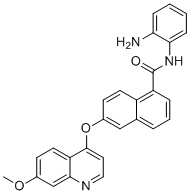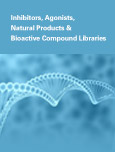Product Inquiry: sales@probechem.com
Order/PO receiving: order@probechem.com
- Home
- Chemical Inhibitors & Agonists
- Antibiotics and Antivirals
- Apoptosis
- Autophagy
- Cell Cycle/DNA Damage
- Cytoskeleton/Cell Adhesion Molecules
- Epigenetics
- GPCR
- Immunology/Inflammation
- JAK/STAT Signaling
- Membrane Transporter/Ion Channel
- Metabolic Enzyme/Protease
- NF-κB Pathway
- Nuclear Receptor/Transcription Factor
- PI3K/Akt/mTOR Pathway
- Proteasome/Ubiquitin
- Ras-Raf-MAPK-ERK Pathway
- TGF-beta/Smad
- Tyrosine Kinase
- Wnt/Notch/Hedgehog
- Others
- SARS-CoV-2 Related
- ADCs and PROTACs
- Antibodies & Recombinant Proteins
- Contact Us














